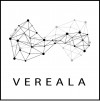
The NIA welcomes this week’s communication from the European Commission advancing a new Strategy on Advanced Materials for Industrial Leadership. Materials are the foundation of much of the future circular economy. For the world to benefit from new energy production from solar and wind, new transportation like fuel efficient aircraft and electric vehicles and improved healthcare such as medical devices or pharmaceuticals, there is a need to bring to the market new material innovations. The newly published Strategy recognises this and sets out some of the challenges that need to be addressed to ensure that Europe has a leading role in the development of advanced materials.
The NIA broadly supports the new strategy proposed by the European Commission and would urge it to ensure that it considers the following recommendations to implement its Strategy effectively.
Invest in scale-up. Europe has played a leading role in developing new research in advanced materials, including nanotechnology. Nonetheless, the difficulty lies in ensuring that innovations created at the laboratory level successfully transition to commercially available products. Too often has a leading European research position been overtaken by other regions investing in the scale-up and commercialisation of a technology.
Don’t forget the SMEs. Many new material developments happen in small and medium sized enterprises (SMEs). Some of these will be companies spun-out of universities or larger companies.Others are the result of entrepreneurs bringing new innovations to the market. Often what hampers SMEs is not the failure of their technology innovations, but the struggle of raising enough capital investment quicky enough to scale the innovation and bring it to the market. Nanomaterials have demonstrated that developing a material innovation can be a lengthy and costly process, and securing long-term investment can pose a challenge. Whilethe private sector should invest in the European Commission’s proposed public and private partnerships (PPPs), this will prove to be challenging for SMEs and may exclude them from participation.
Effective regulations and standards. Nanomaterials are a good example for advanced materials of the challenges new materials bring for regulations and standards to keep pace with technological innovations. The Malta Initiative Position Paper, of which the NIA is a signatory, has shown the key role that the internationally accepted methods and standards play in the development of safe and sustainable innovations. The European Commission should look to adopt the European Test Methods Strategy as proposed by the Malta Initiative to ensure that advanced materials can be brought to the market efficiently and have in place the required harmonised methods and standards for them to comply with EU regulations and legislation.
Don’t forget nano. In the 17 pages of the Strategy, nanomaterials are mentioned only once. Europe maintains a leading role in nanotechnology, with extensive knowledge gained in this field that can benefit the development of other advanced materials. Safety research has enhanced regulatory standards, and the development of new characterization techniques has broadened our understanding of various materials. Moreover, the challenging journey of securing investment to transition new materials from the laboratory to large-scale production has provided valuable lessons. Europe's substantial investment in nanomaterials through successive Framework programmes has laid the groundwork for the ongoing revolution in advanced materials



















